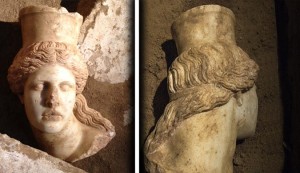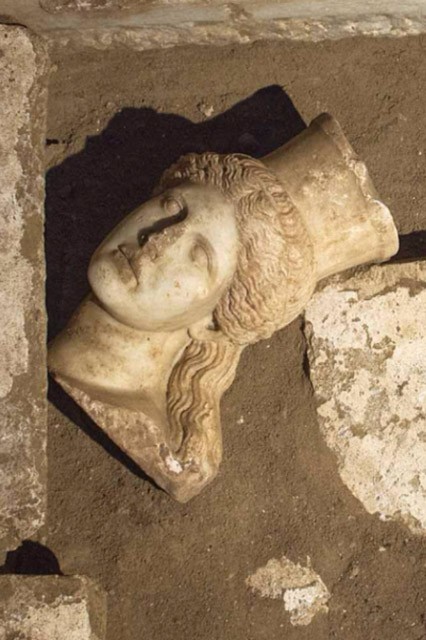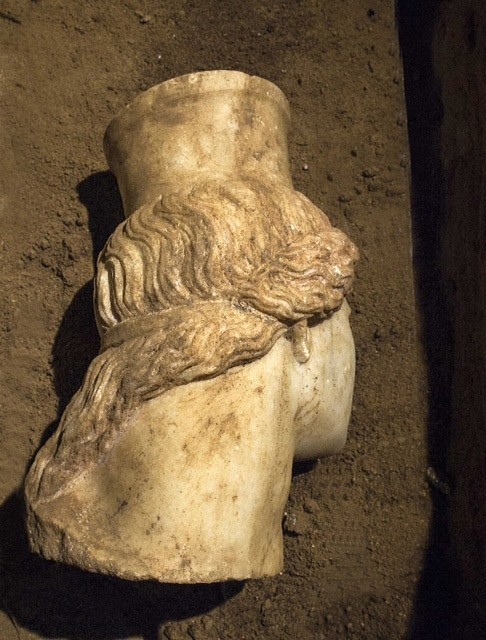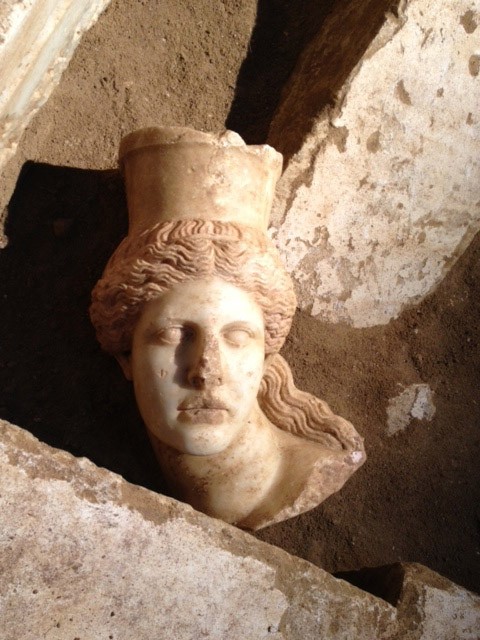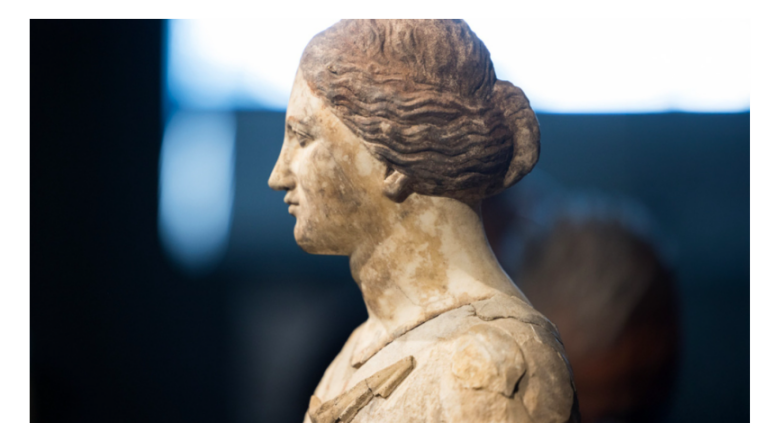Ancient Art Historian Efthymis Lazongas of the Higher School of Fine Arts in Athens spoke to Proto Thema about the symbolism of the sphinx following the excavation of the marble head with female features. “The sphinxes that have a lion’s body, female head and eagle’s wings were widely used in the archaic period to crown usually Attica’s headstones,” he says. “They have an avertive character and stand as guards to each tomb.”
He says that the sphinx heads in such cases are usually tilted towards the viewers, unlike sphinxes created as votive offerings, that usually look straight ahead. He says that they act as symbols of supernatural power and have characteristics of strength, grace, femininity, wisdom and are enigmatic creatures associated with the three phases of life and the myth of Oedipus.
The use of the sphinxes at the entrance of the tomb of Amphipolis is perplexing as these creatures were rarely encountered during the classical period and in a proment monumental sculpture for funerary use. Consequently, the existence of the two sphinxes at the entrance of the tomb was either of a symbolic character or as part of a plethora of other funerary symbols that decorate the grave, such as the lion mounted at the top, the caryatids and the mosaic featuring the abduction of Persephone.
Mr. Lazongas wonders if the use of the sphinx could be a remnant of the Attican tradition surviving at Amphipolis from the days when it was an Athenian colony, bearing in mind the fact that caryatids were also found in the tomb. In any case, the style of the sphinx guards dates back to the last quarter of the 4th century B.C. when sphinxes such as the ones at the ancient tomb could easily have been created by an Athenian sculptor.
The ancient art historian points out that the loose hair betrays their demonic nature whereas there is a great deal of sensuality in the modeling of the skin with fleshy cheeks and thick lips showing a lusty nature. In ancient Greek art, the infernal characteristics usually meet a sexual side as they are sometimes portrayed with breasts and are also associated with young men.
The lioness sphinx guards usually served as guardians of the tomb so as to protect the eternal sleep of a large male lion that symbolised the brave occupant of the tomb and are linked to the large lion that adorned the top of the tomb.
Mr. Lazongas says that the discovery of the sphinx’s head inside the third chamber shows without doubt that the tomb has been plundered.
Ask me anything
Explore related questions
